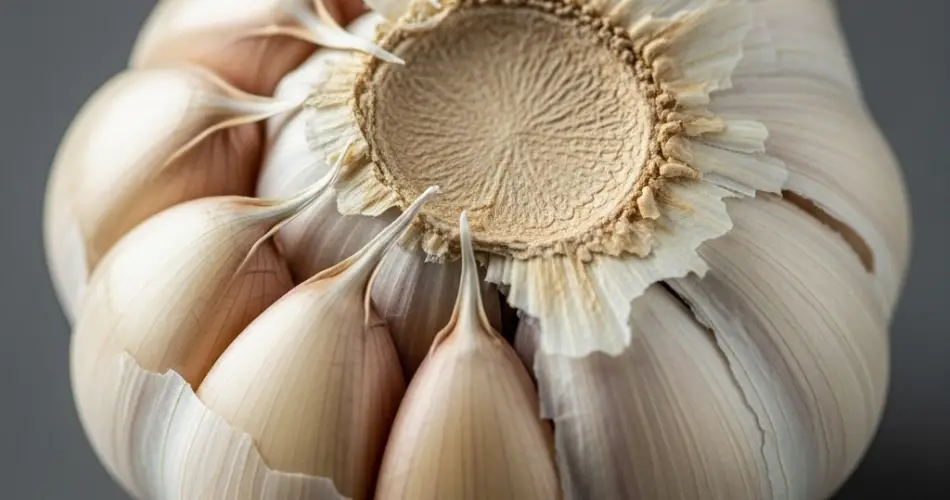Growing giant garlic bulbs is entirely possible in a home garden with the right care and techniques. Garlic is not only a staple in the kitchen but also an easy and rewarding crop to grow, even for beginners. The secret to harvesting impressively large bulbs lies in careful planning, correct planting methods, and proper maintenance throughout the growing season. Here’s how to do it step-by-step.
Choose the Right Garlic Variety
The journey to large garlic bulbs starts with the variety you plant. There are two main types of garlic: softneck and hardneck. While softneck garlic is commonly sold in supermarkets, hardneck varieties often produce larger cloves and are better suited for cooler climates. If you’re aiming for giant bulbs, look for varieties like ‘Music,’ ‘German Extra Hardy,’ or ‘Elephant Garlic’ (technically more closely related to leeks, but still popular for its size).
Use Healthy, Large Cloves
Always plant only the largest and healthiest cloves from a garlic bulb. Small or damaged cloves result in small bulbs. Avoid grocery store garlic, as it may be treated to prevent sprouting. Instead, purchase seed garlic from a reputable garden center or supplier. Make sure the cloves are firm and free of mold or damage.
Prepare the Soil Well
Garlic thrives in loose, well-draining soil that is rich in organic matter. Before planting, amend the soil with compost or well-rotted manure. A slightly sandy loam is ideal. Garlic does not do well in heavy clay or waterlogged soils, which can stunt growth and encourage rot. The pH should be slightly acidic to neutral—between 6.0 and 7.0.
To ensure optimal bulb development, loosen the soil to a depth of at least 8 inches. This allows roots to spread easily and bulbs to expand. Adding bone meal or a phosphorus-rich organic fertilizer will also give the garlic a healthy start.
Plant at the Right Time
Timing is critical when planting garlic. For most climates, fall planting is best. Garlic needs a period of cold dormancy, known as vernalization, to develop large bulbs. Planting in the fall, about 4–6 weeks before the ground freezes, allows cloves to establish roots before winter sets in.
In milder climates, you can also plant in late winter or very early spring, but the bulbs may not reach their full potential without a proper cold period.
Planting Technique
Separate the bulb into individual cloves, leaving the papery skin intact. Plant each clove pointed end up, about 2 inches deep and 4–6 inches apart. Space rows about 12 inches apart. Mulch the area with straw or shredded leaves to insulate the cloves and suppress weeds.
Water and Fertilize Properly
Garlic prefers consistent moisture, especially during the early stages of growth. Water deeply but allow the soil to dry slightly between waterings. Once the bulbs start to mature—usually in late spring—reduce watering to prevent rot and allow the bulbs to harden off.
Fertilize with a balanced organic fertilizer in early spring and again when shoots are 6 inches tall. Avoid nitrogen-heavy fertilizers late in the season, as these encourage leafy growth instead of bulb development.
Remove Scapes Promptly
If you’re growing hardneck garlic, the plants will produce flower stalks called scapes in late spring or early summer. These should be removed as soon as they appear, ideally when they start to curl. Removing the scapes redirects the plant’s energy into growing larger bulbs instead of developing flowers.
Bonus: garlic scapes are edible and delicious in pesto, stir-fries, or grilled as a side dish.
Harvest at the Right Time
Harvesting garlic at the right time ensures both good size and storage quality. When the lower third of the leaves turn brown, it’s time to dig up the bulbs. Don’t wait for all the leaves to die back, as overripe bulbs may split and not store well.
Use a garden fork to gently lift the bulbs from the soil. Avoid pulling by hand to prevent damage. Shake off excess soil and let the bulbs cure in a warm, dry, shaded area with good airflow for two to three weeks.
Store and Save the Best for Next Season
Once cured, trim the roots and cut off the stems, or braid softneck varieties. Store garlic in a cool, dry place with good ventilation. Save the largest cloves from your harvest to plant next season—this selective practice ensures you’ll keep producing big bulbs year after year.
By following these steps—selecting the right variety, planting at the right time, feeding and watering consistently, and harvesting correctly—you can enjoy a successful garlic harvest with giant, flavorful bulbs that are a true point of pride in your home garden.



